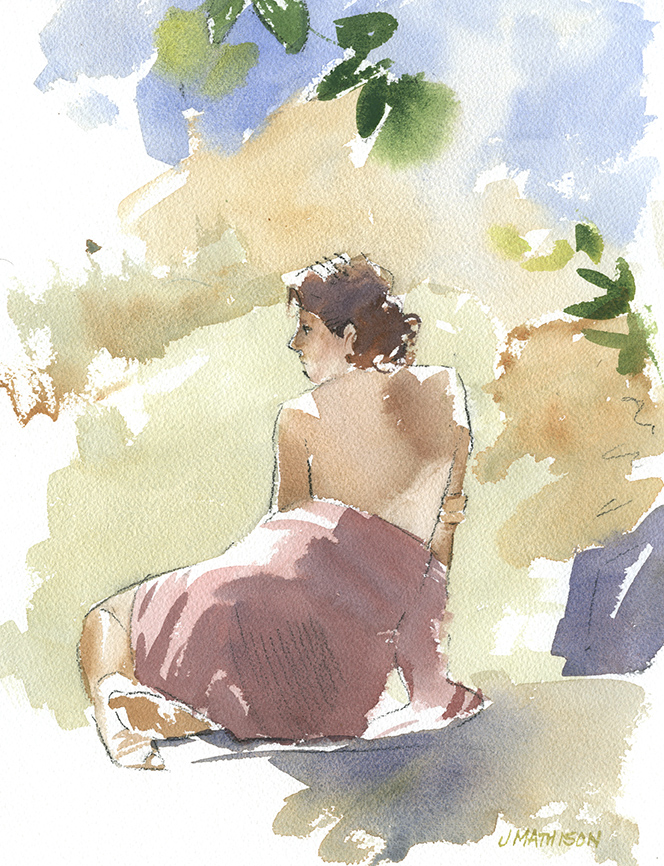
“The point [to painting the figure outdoors] is to connect the human story, as represented by a model, with the spirit of Nature.” Watercolor artist Jeff Mathison explains.
Painting the Free Spirit
BY JEFF MATHISON
If a tree grows in the forest and no one paints it, is it really there?
I believe we are the eyes of Nature. As humans, we are intertwined with the stories of the trees and the streams and the rocks. Artists are meant to illuminate those stories for all to see.
For centuries, people spent little time in interior spaces. Art depicted people in nature more often than not. In that tradition, I like to take models outside. We may hike a long trail to reach a rocky waterfall, or just step out to the garden. The point is to connect the human story, as represented by a “model,” with the spirit of Nature.
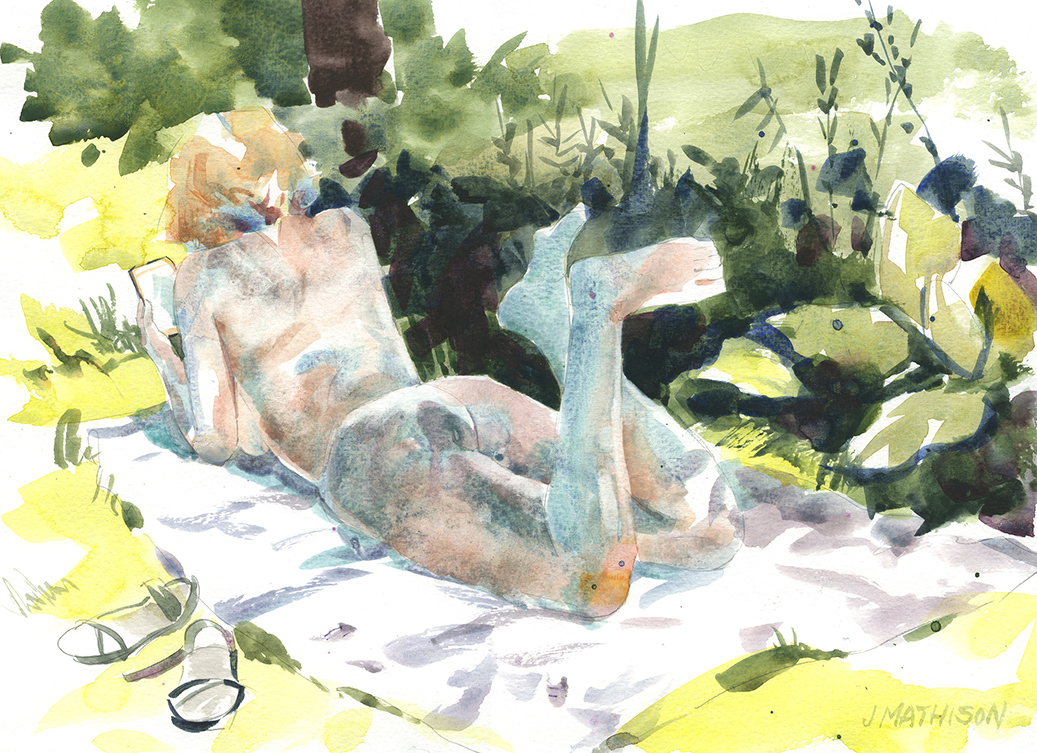
Eight years ago, I emerged from a rocky time in my life with a renewed interest in figure painting. In the past, I had worked in pastel, charcoal, oils, and acrylic, among others. I determined to stop flitting between media. I focused on watercolor because it was challenging enough to intrigue me. I had attended art school, but never received formal training in watercolor. It was the least known territory I could explore. I wondered what was on the other side of that hill.
The mountains and woodlands of central Pennsylvania were my first subject. I particularly relished a reintroduction to plein air painting that included a workshop on a farm. Meanwhile, I attended a local model-drawing group for several years. There I evolved color choices and brush techniques for capturing a male or female body in twenty-minute poses under artificial lighting.
When I found a model who was happy to pose nude outdoors, my first thought was to just paint the same way I’d done my plein air landscapes and studio life paintings.. But it was bug season. We were hot and scratchy. Neither of us could hold still.
I suggested photography instead, and we were both much happier. The resulting paintings of a free spirit interacting with a mountain brook in the cool shade of rhododendrons and oaks seemed like the theme I’d been looking for all my life.
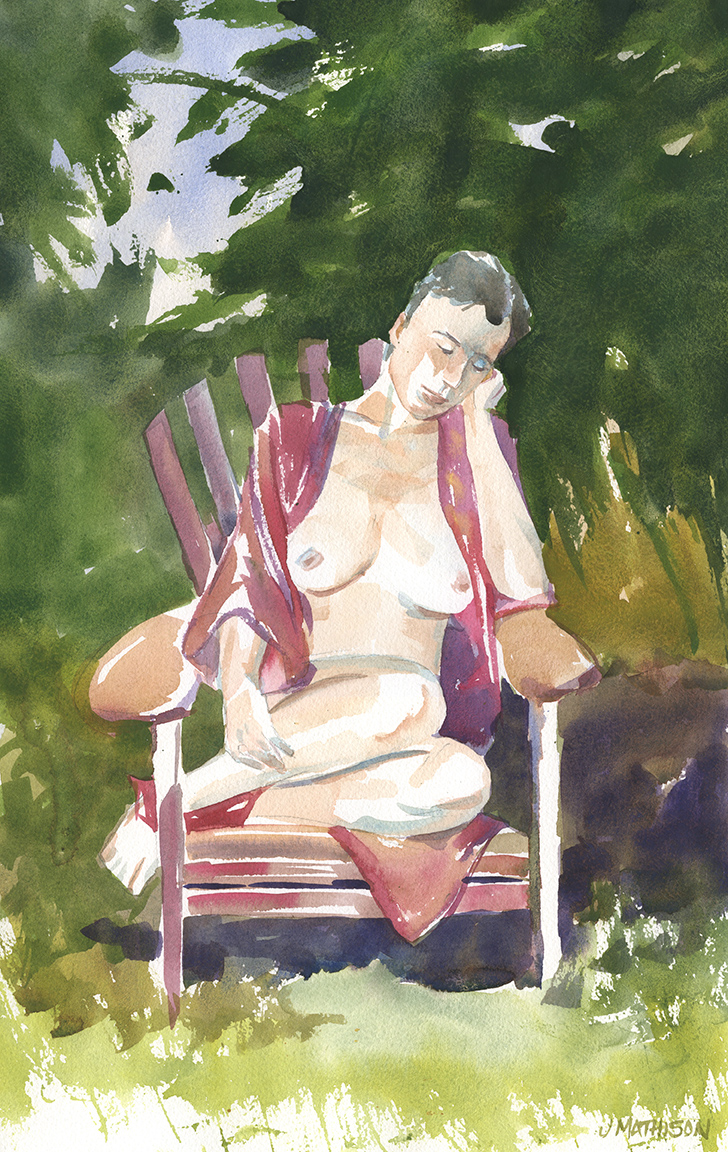
I’ve gone on to work with a dozen other models since, including some wonderful shoots in the very different red rock landscape of Utah. I take many photos, and select only a few that catch an interesting gesture, the essence of the moment. I often select poses that no one could hold long enough to capture in paint. I spend anywhere from a few hours to a few days creating the final watercolor. My best paintings result from photo reference. I’ve even taken a few awards.
Related Article > Painting from Photographs: How the Advantages Outweigh the Disadvantages
But the camera lens will always distort the reality that our eyes see. We are so used to viewing photos that we may not even notice that the model’s arm, stretched out behind her, is absurdly attenuated. I have completed what I thought were fine paintings, only to realize after a week that I had blindly copied artificial distortions. Working from life, whether inside a studio, or plein air, retrains my memory of how a body is supposed to look.
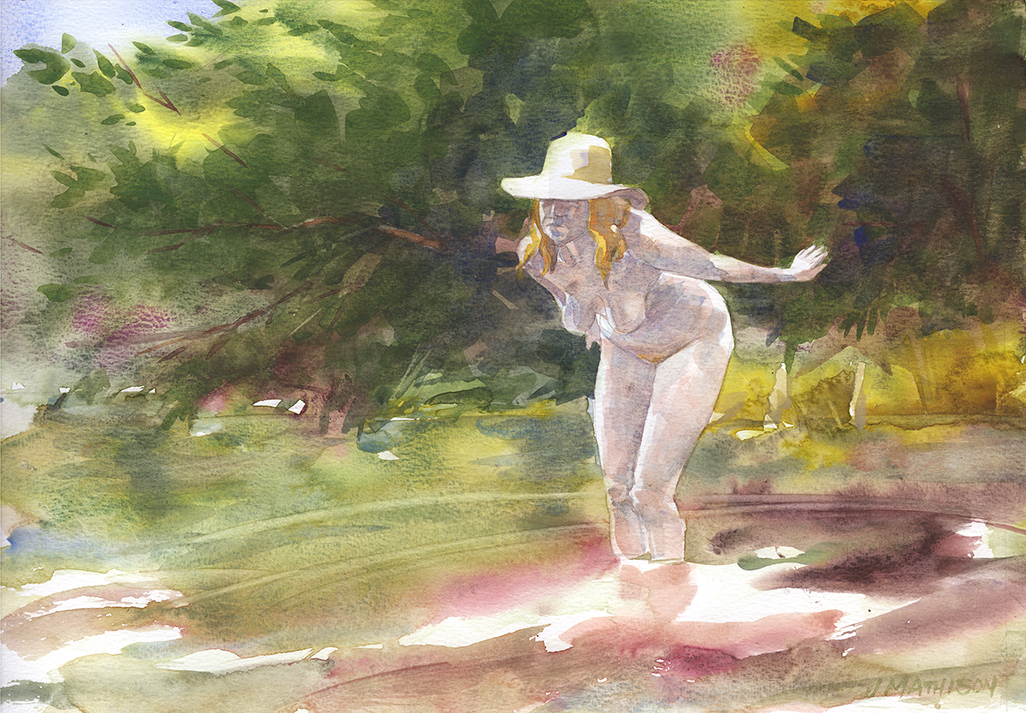
There is also something refreshing about catching sunlight on the human figure with nothing but my eye and my brush. In recent summers, I’ve challenged myself to do outdoor painting of a model. The distractions remain: bugs and sunburn and airplanes flying low! The rewards include a renewed sense of spontaneity and playfulness. It’s a great way to pass a summer afternoon!
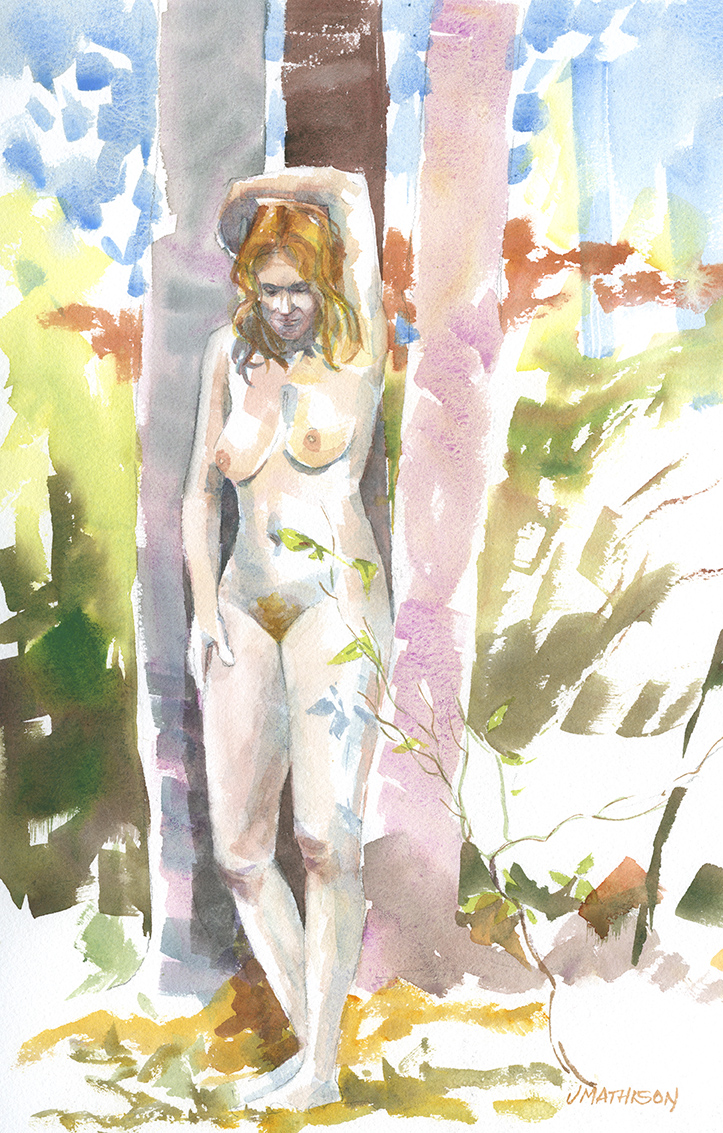
Painting the Figure Outdoors, with Watercolor
I’ve been happy with watercolor as my main medium. The best thing about watercolor is the accidental blending of wet colors. Paint that mixes of its own accord as it is applied to the paper will have a liveliness that colors blended on the palette cannot achieve.
The worst thing is that the paint dyes the paper and can never be totally removed. Nor can it be covered over. White paper is invaluable for contrast with the darks and the colors. I burn a lot of watercolors that died of mediocre value contrast!
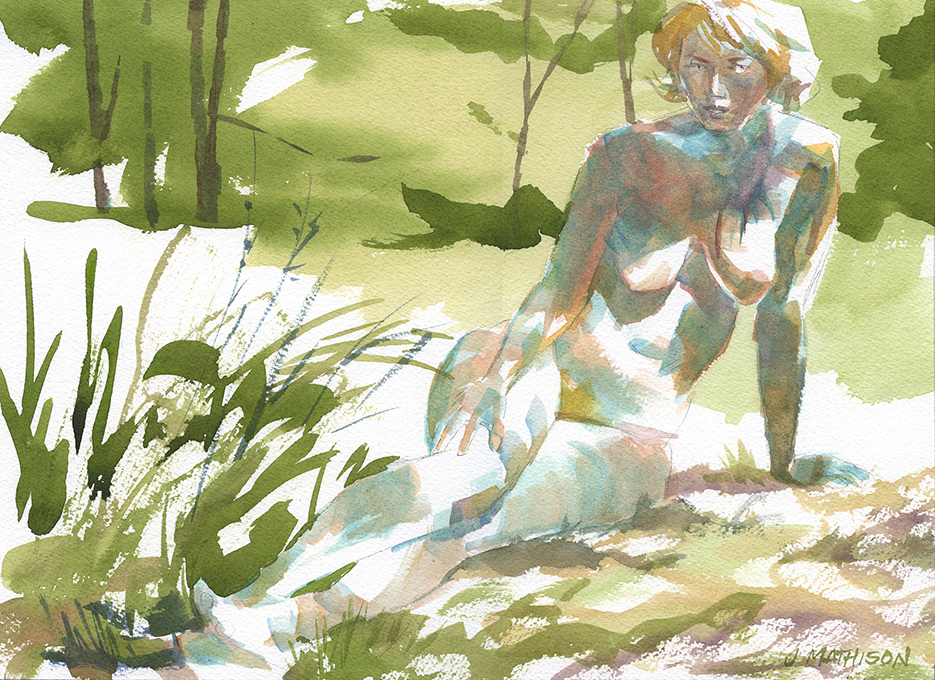
Painting Flesh Tones with Watercolor
There are many ways to paint flesh tones. My recipe starts with a particular color from the Daniel Smith catalog. Their version of cobalt violet combines smoothly with several other colors on the palette. When brushed on, it settles out of solution into the grain of the paper, creating a fine mottled effect that suggests the textures of real skin. I add cobalt teal blue to the violet for the first glaze. While still wet, I add a mix of buff titanium with varying amounts of cadmium red, imperial purple and others, to match the model’s skin color.
Generally, the figure is central to both my theme and composition. I try to tie in the background with at least a bit of the body colors showing up in the bark, or rock or vegetation. Usually the shadow areas on the figure are bluish from picking up the sky color.
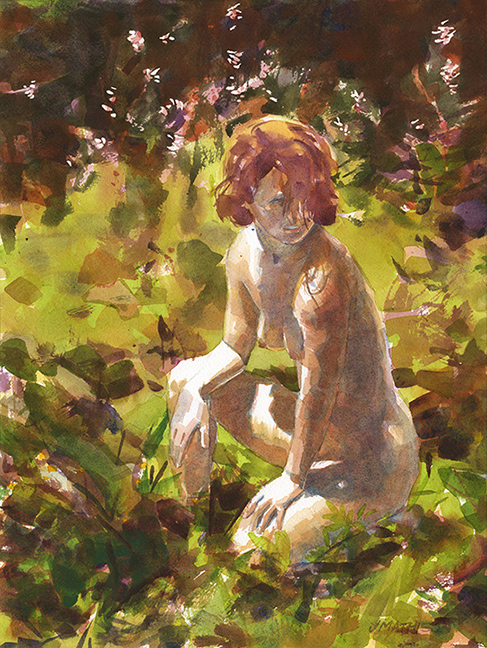
This past summer, I began holding workshop sessions so that other painters could share the fun of what I call the “Renoir Experience.” We met up at a historic estate that offered lovely gardens and plenty of privacy. We split the fees for the estate and the model. Such a workshop may be complex to arrange. In particular, you just never know about the weather. I was mostly worried about rain, but it was a heat wave that kept several people at home. As it turned out, we were fine under the shade of stately old maples. The model was especially pleased to get paid for lounging nude, on a lovely summer day!
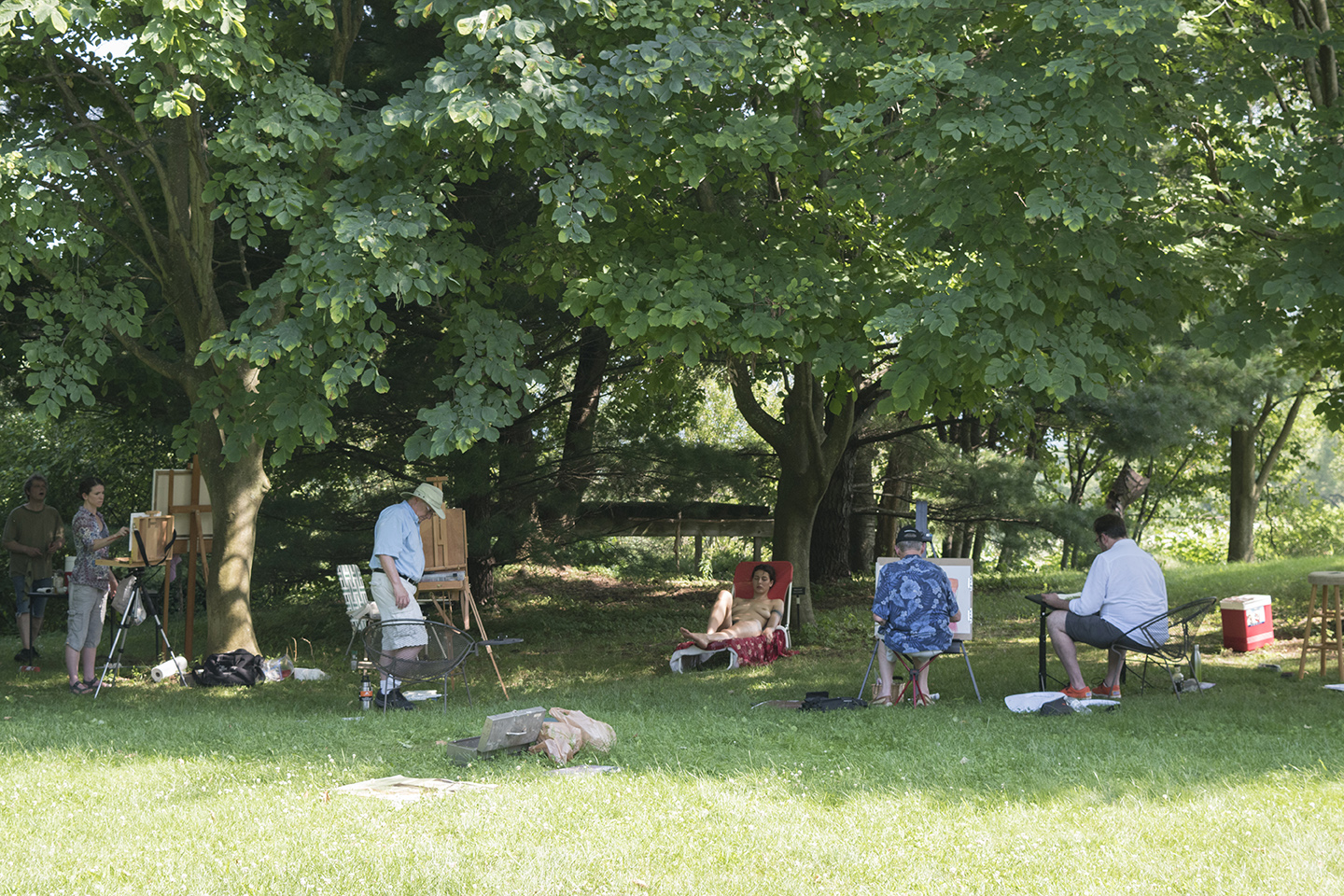
I would encourage other artists to try painting the figure outdoors. If you’re experienced at plein air painting, then you probably already have a good kit. I’ve been lucky to have the run of some private properties where a nude model is accepted. You may find a model through the art department of a local college, or any art groups around your town. You could also try modelmayhem.com, an online service that connects models with photographers and artists.
Perhaps you too, can tell a story of not just trees, and not just a figure, but the spirit of both in one painting!
Connect with Jeff Mathison:
Website | Instagram
Have you ever painted a model outdoors? Share your experience with us in the comments below!
> Visit EricRhoads.com (Publisher of Realism Today) to learn about opportunities for artists and art collectors, including:
- Art retreats
- International art trips
- Art conventions
- Art workshops (in person and online)
- And more!






